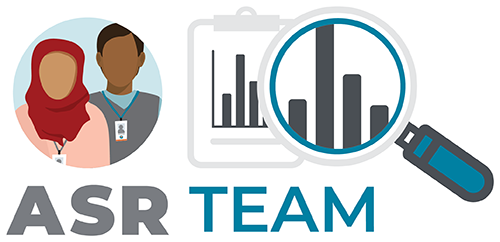Masking and Visitation Changes: Due to high rates of respiratory illnesses in our community, we’ve made changes to our masking and visitation guidelines. Learn more.

Since the Health Equity and Anti-Racism Action Plan was released in 2021, Seattle Children’s has consistently shared progress updates. Historical progress updates are on this page, showing Children’s path to becoming an anti-racist organization.
In 2023, Seattle Children's began sharing progress updates in the form of annual reports for the fiscal year. View the 2023 Health Equity and Anti-Racism Annual Report.
Seattle Children’s Health Equity and Anti-Racism (HEAR) Action Plan is comprised of three phases, each lasting 18 months. Phase one ended March 31, 2023 and phase two is underway. See more work detail about our journey to become an anti-racist organization in the previous quarterly reports.
See this as an infographic in English or Spanish.
Read the Covington review of Phase 1 and Seattle Children’s response released in May 2023.
 Seattle Children’s values-based behaviors and leadership qualities were updated to better reflect anti-racism.
Seattle Children’s values-based behaviors and leadership qualities were updated to better reflect anti-racism.
See what anti-racism and inclusion look like in practice.
 37 families, community leaders and workforce members developed recommendations that created the Adaptive Social Response system.
37 families, community leaders and workforce members developed recommendations that created the Adaptive Social Response system.
Meet the team now providing relational, proactive support for patients, families and workforce.
 Improvement in rating as demonstrated by Seattle Children’s workforce responses to the prompt: “This organization values workforce members from different backgrounds.” (Goal was 3.82 out of 5.0; actual was 4.01.)
Improvement in rating as demonstrated by Seattle Children’s workforce responses to the prompt: “This organization values workforce members from different backgrounds.” (Goal was 3.82 out of 5.0; actual was 4.01.)

 Increase in racial/ethnic diversity since the Action Plan release*:
Increase in racial/ethnic diversity since the Action Plan release*:
Read more about Latinx employee experiences at Seattle Children’s.
* % increase represents percentage points. Data as of July 31, 2021, and March 31, 2023.
** Data as of March 31, 2023; comparison data from 2021 unavailable.
 Research investments that support historically underrepresented communities in healthcare and biotech span the academic spectrum, from elementary through high school, to college and post-doctoral.
Research investments that support historically underrepresented communities in healthcare and biotech span the academic spectrum, from elementary through high school, to college and post-doctoral.

 FY23 evaluations will incorporate the updated values, emphasizing anti-racism and inclusion.
FY23 evaluations will incorporate the updated values, emphasizing anti-racism and inclusion.
 10% of patient population speaks a language other than English.
10% of patient population speaks a language other than English.
Top 5 requested languages for interpretation: Spanish, Somali, Vietnamese, Mandarin and Cantonese.
 Bias Reduction in Medicine Trainings (BRIM) will continue to scale and adapt for providers. An additional anti-racism course for the broader workforce is in development.
Bias Reduction in Medicine Trainings (BRIM) will continue to scale and adapt for providers. An additional anti-racism course for the broader workforce is in development.
Read about all of the FY24 Outcome Measures.
September 2022 web page, September 2022 (PDF) (en Español)
June 2022 web page, June 2022 (PDF) (en Español)
March 2022 web page, March 2022 (PDF) (en Español)
December 2021 (PDF) (en Español)